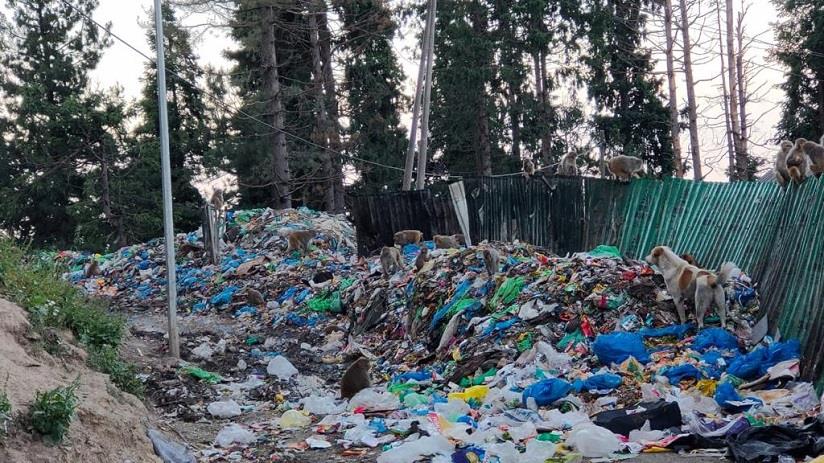
The Plastic Bloom Of Kashmir
Representational photo
By Vikas Thakur
It was a mild spring morning when I found myself driving from Sopore to Kupwara. The hillsides glowed with apple trees in full bloom. Petals swirled in the breeze, sunlight caught the delicate whites and pinks, and for a fleeting moment, it felt as if Kashmir had paused in perfection.
The road curved beside the Pohru river, where only thin lines of green and brown water moved over the stones. A patch of wild bushes hugged the bank, and at first glance, they seemed covered in spring flowers: red, yellow, blue, white.
ADVERTISEMENTThen something green flickered in the sunlight, a colour no flower should carry.
I asked the driver to stop and stepped out. Closer inspection shattered the illusion. The“flowers” were plastic bags, carried downstream during monsoon floods, trapped in thorns, and flapping in the wind like grotesque petals.
A kaleidoscope of discarded packaging had created a strange, colourful dazzle along the riverbank. My heart sank. What I had admired as natural beauty was a warning sign: our land was drowning in plastic.
The crisis spreads across Kashmir. From Pahalgam to Gulmarg, Sonamarg to Gurez, the countryside is littered with waste. From the roads to the rivers and meadows, plastic has crept into every corner. Garbage dumps on the outskirts of towns swell with plastic refuse. Himachal Pradesh banned single-use plastic decades ago. The state still struggles, but at least it took the first step. Jammu and Kashmir never implemented a ban. Here, the problem is on another scale.
Walk into any vegetable shop and you see it in action. Each vegetable gets its own bag. Then the vendor packs all of them into a larger bag. In a single shopping trip, one family can generate a small mountain of plastic.
Travellers toss empty water bottles, snack wrappers, and candy packets from their cars as if the environment does not exist. Well-off, educated, and aware discard with careless disdain.
India, home to more than 140 crore people, is now the largest consumer of plastic. Regulation lags behind consumption. Most plastic never gets recycled. It ends up in landfills, rivers, lakes, and wetlands. Kashmir's springs and streams, once lifelines, are clogged.
The degradation of plastic takes centuries. Over time, it fragments into microplastics, tiny particles that infiltrate water, air, and food. They accumulate in our bodies, affecting liver, kidney, lungs, and brain, causing hormonal disruption and cancer.
International talks under the United Nations Environment Assembly began in 2022 to address plastic pollution. Consensus remains elusive. India hesitates to endorse a ban. Plastic production supports $12 billion of the economy and millions of jobs. Environmental urgency clashes with economic stakes.
Plastic is inescapable today. Yet, I remember a time when life was different. Milk came in glass bottles. Biscuits, toffees, and bread were wrapped in paper. Cloth bags carried vegetables home, sugar and lentils were measured and wrapped in paper. Steel buckets were common, wooden furniture prevalent. Plastic was rare. Communities generated minimal waste, and rivers ran clear.
Now, we rely on reduce, reuse, and recycle. Individual choices matter, but systemic action is urgent. We need strict regulations, binding policies, and immediate plans.
Kashmir cannot withstand endless plastic growth. Every bag discarded along a river, every wrapper tossed from a car, erodes both landscape and health.
That morning by the Pohru river, the kaleidoscope of discarded plastic stayed with me. Beauty has been hijacked by human carelessness, and the warning is unmistakable.

Legal Disclaimer:
MENAFN provides the
information “as is” without warranty of any kind. We do not accept
any responsibility or liability for the accuracy, content, images,
videos, licenses, completeness, legality, or reliability of the information
contained in this article. If you have any complaints or copyright
issues related to this article, kindly contact the provider above.





















Comments
No comment